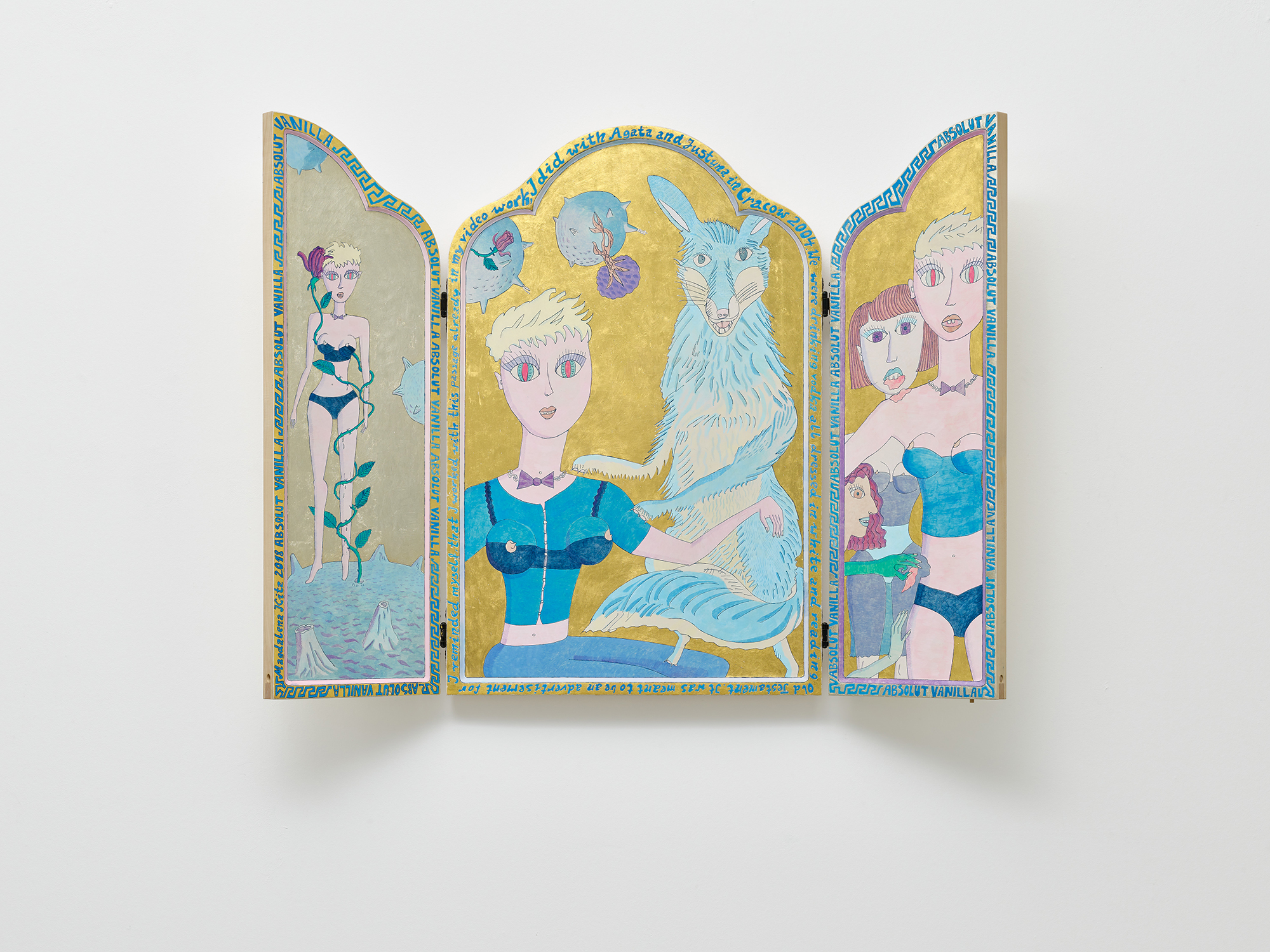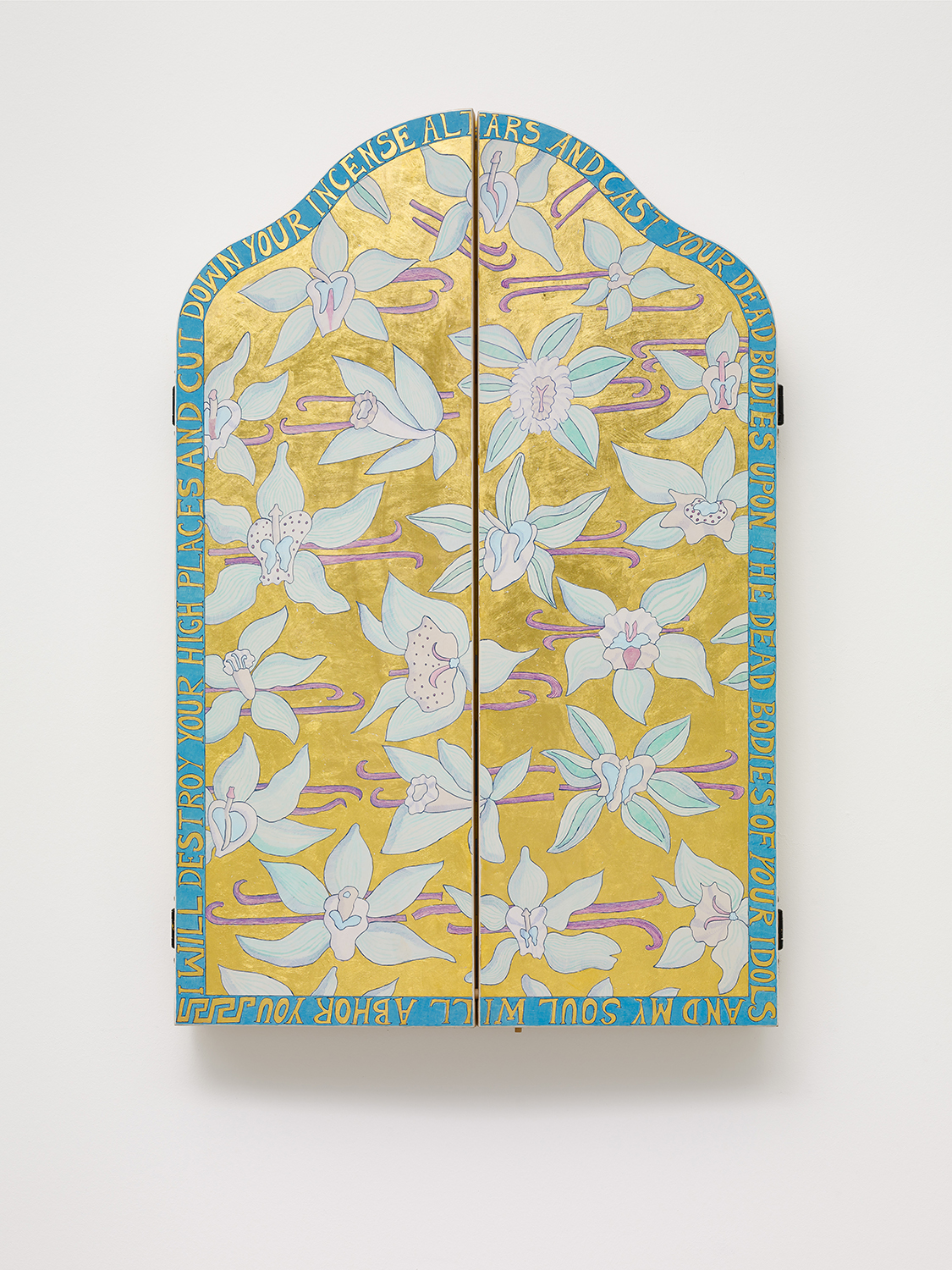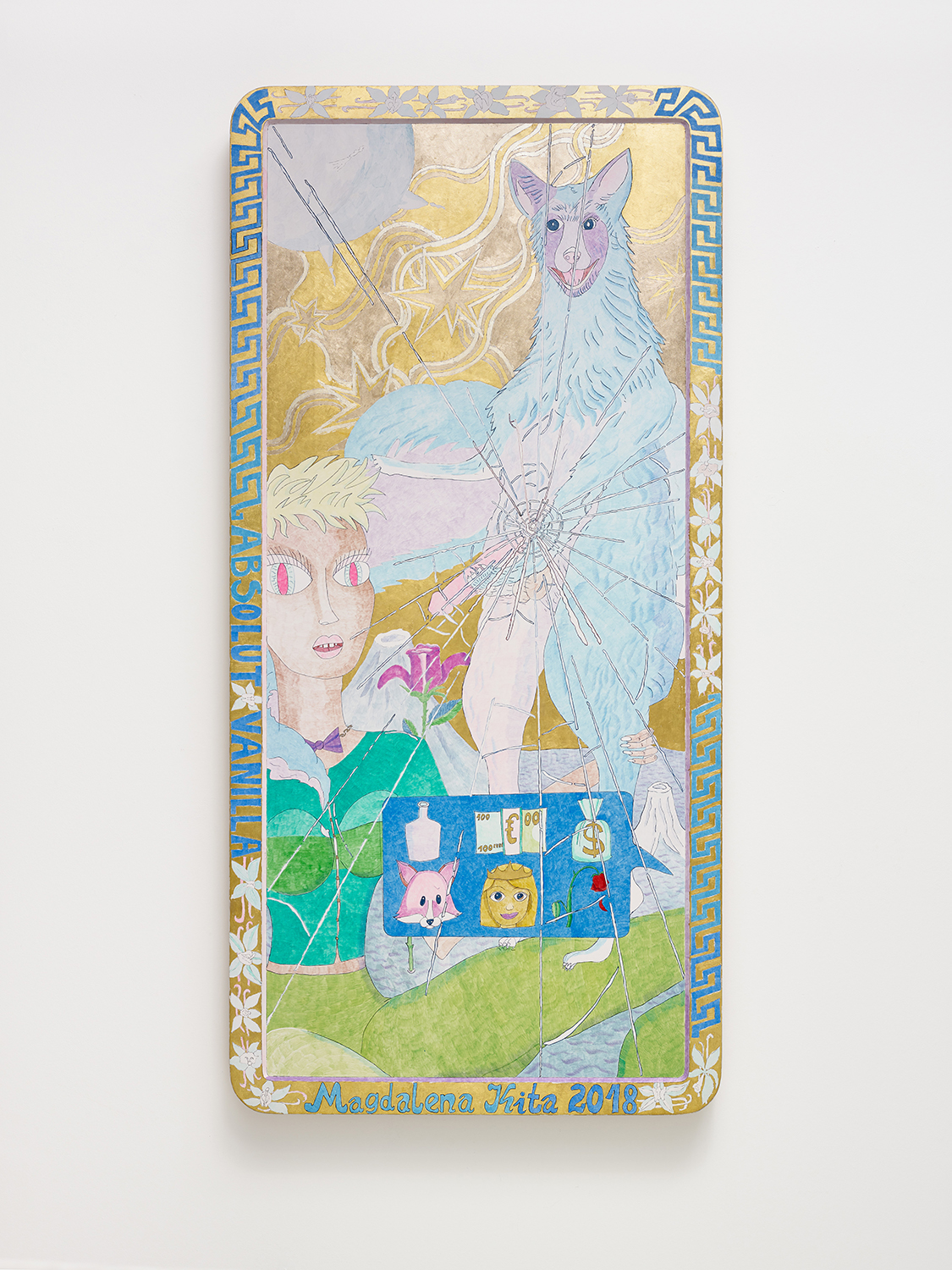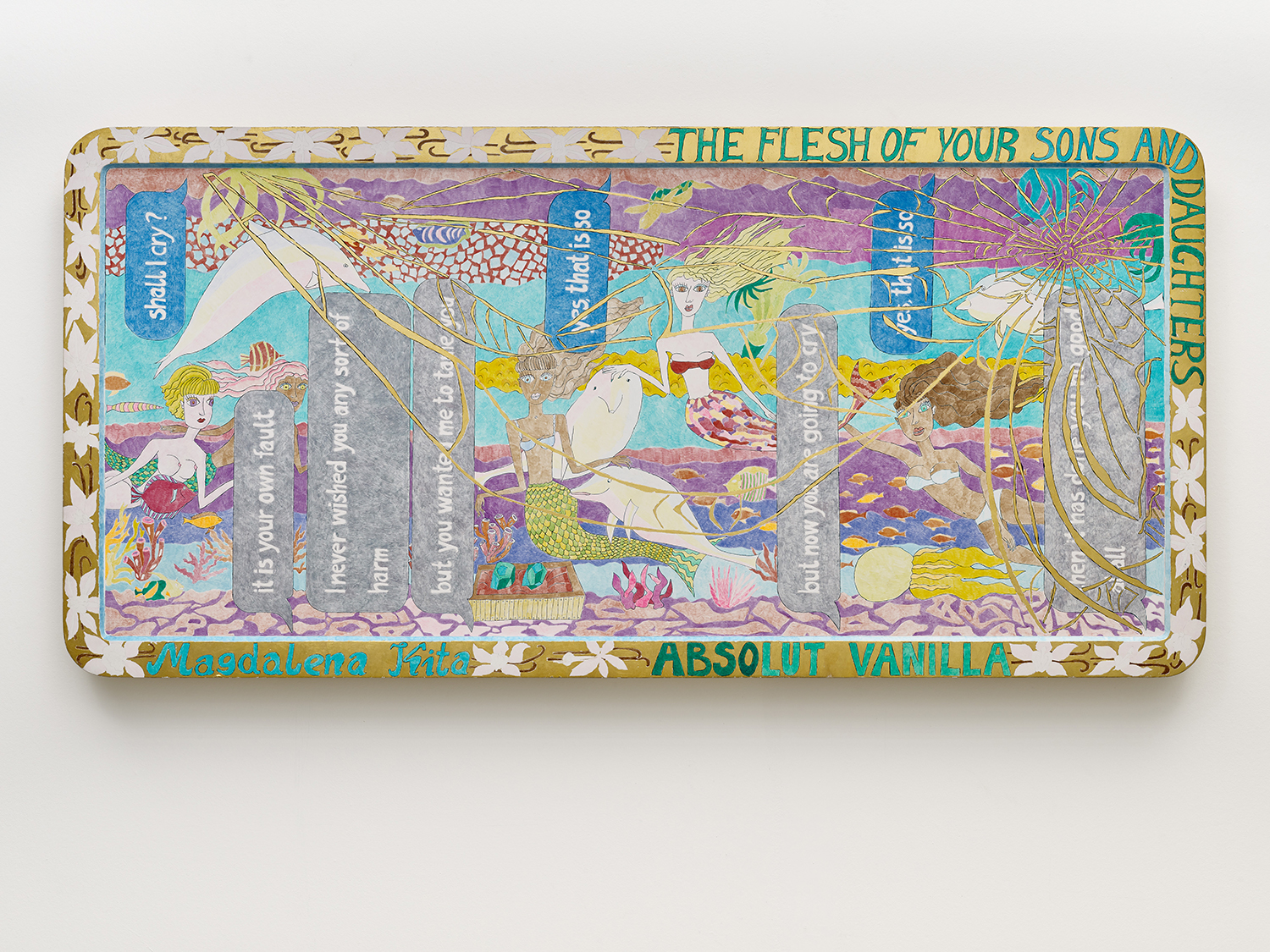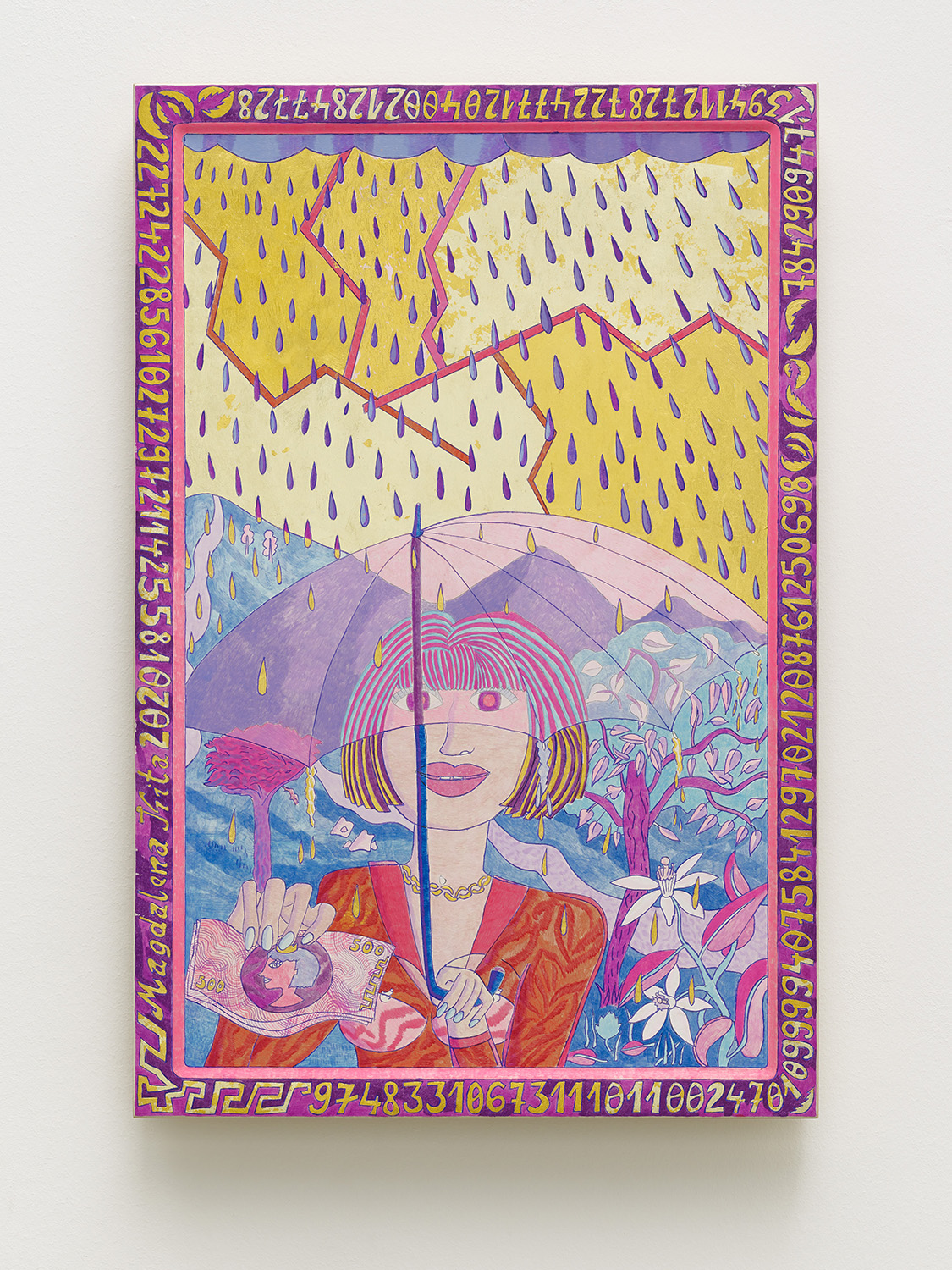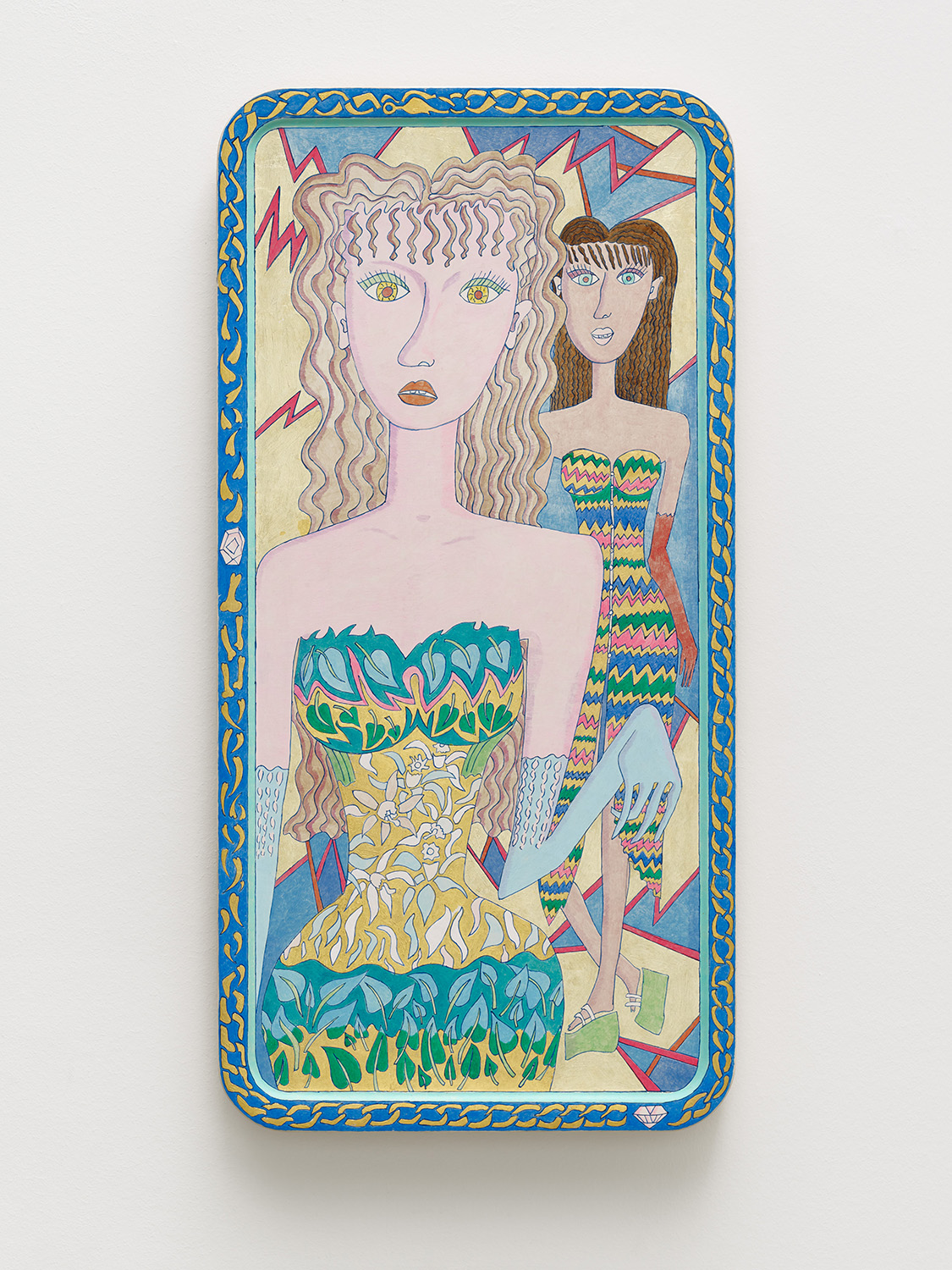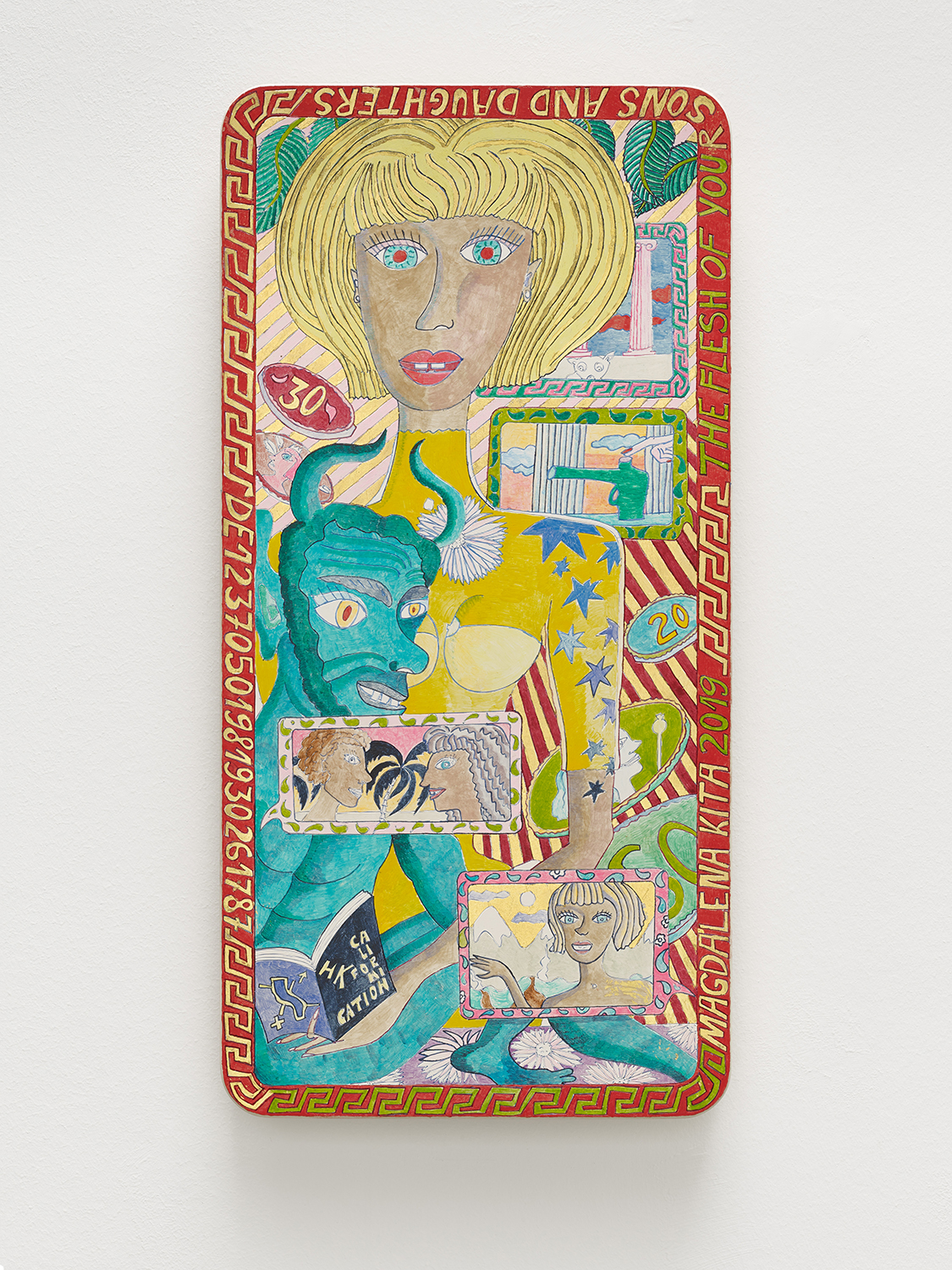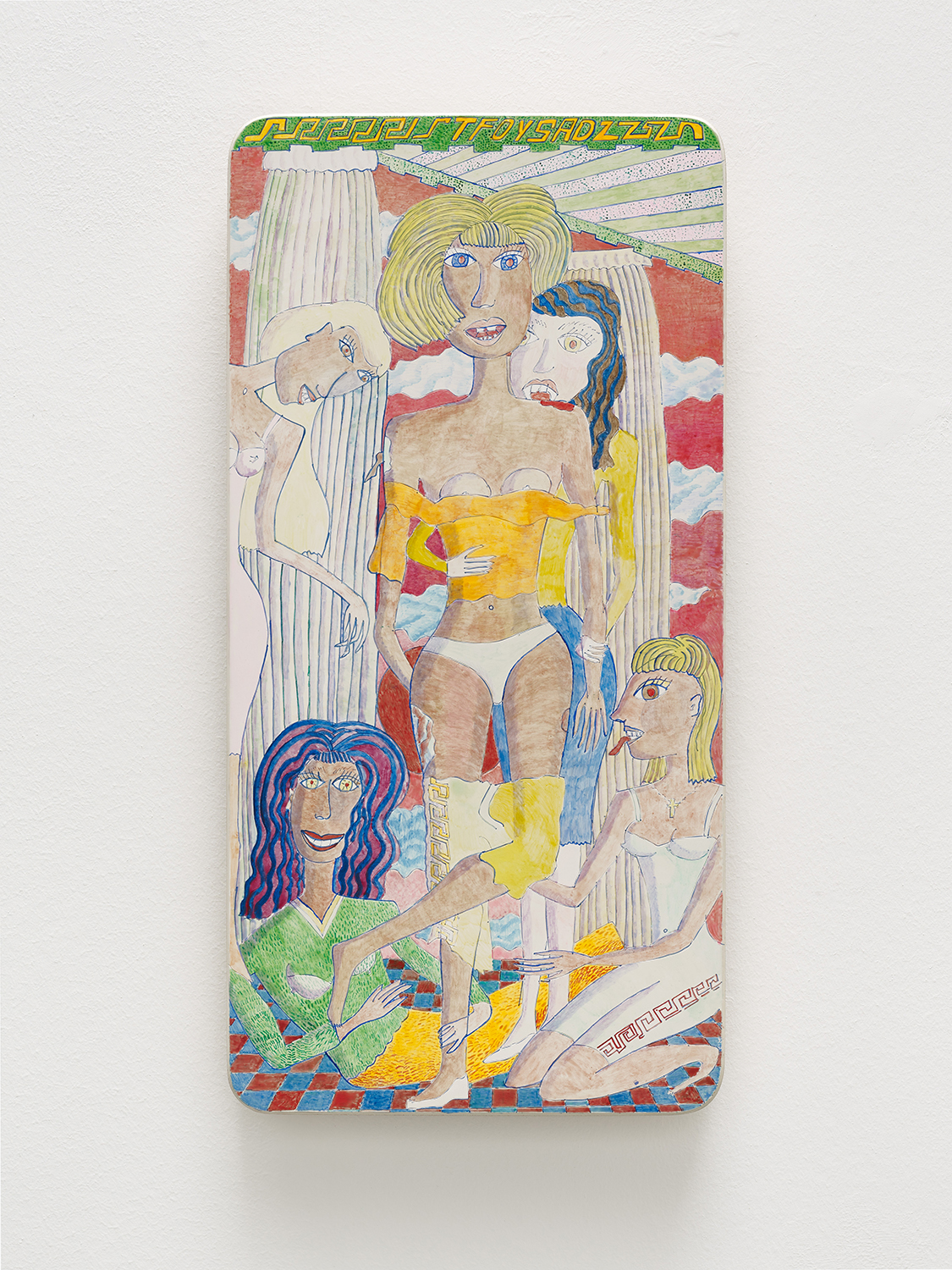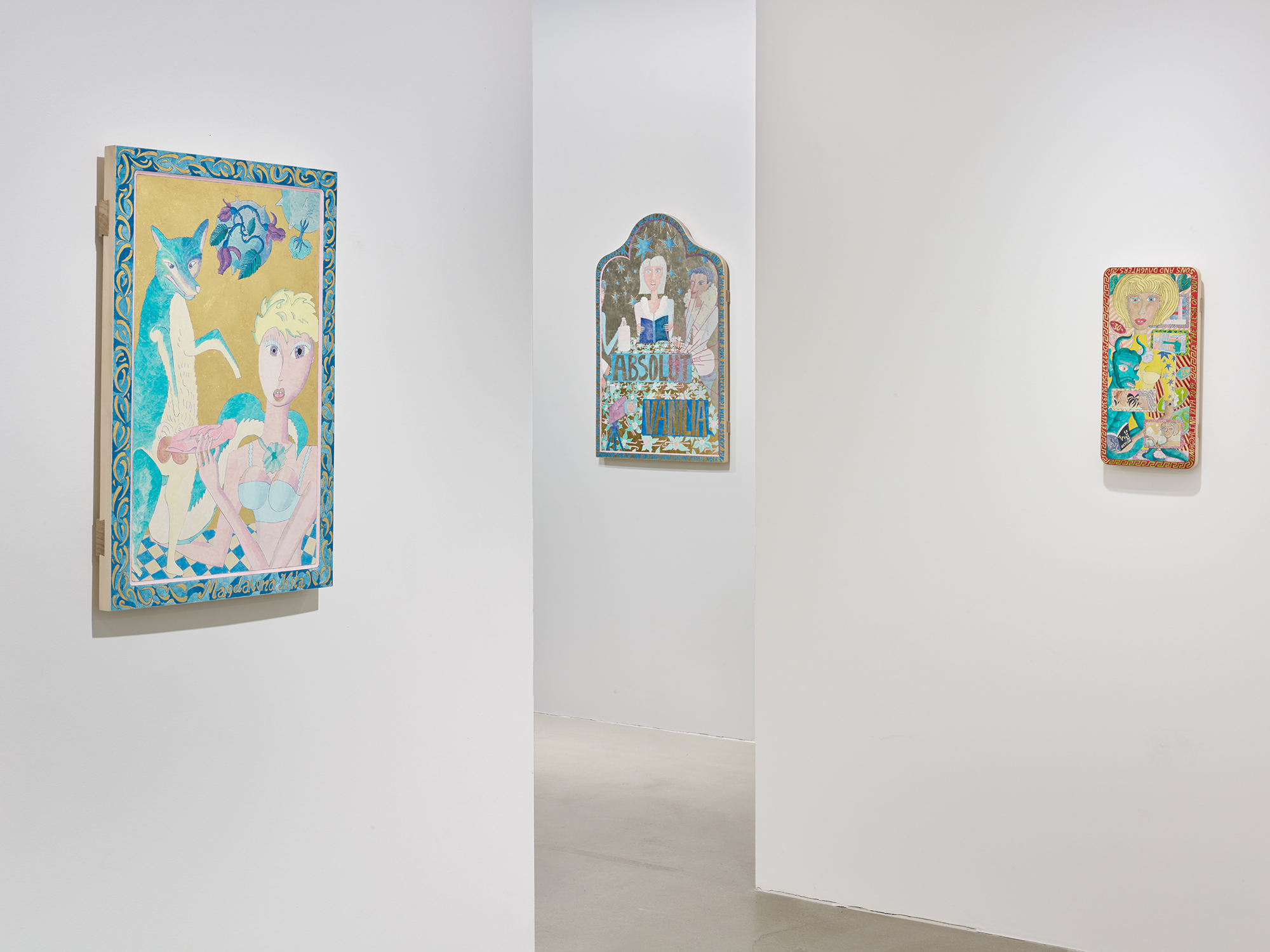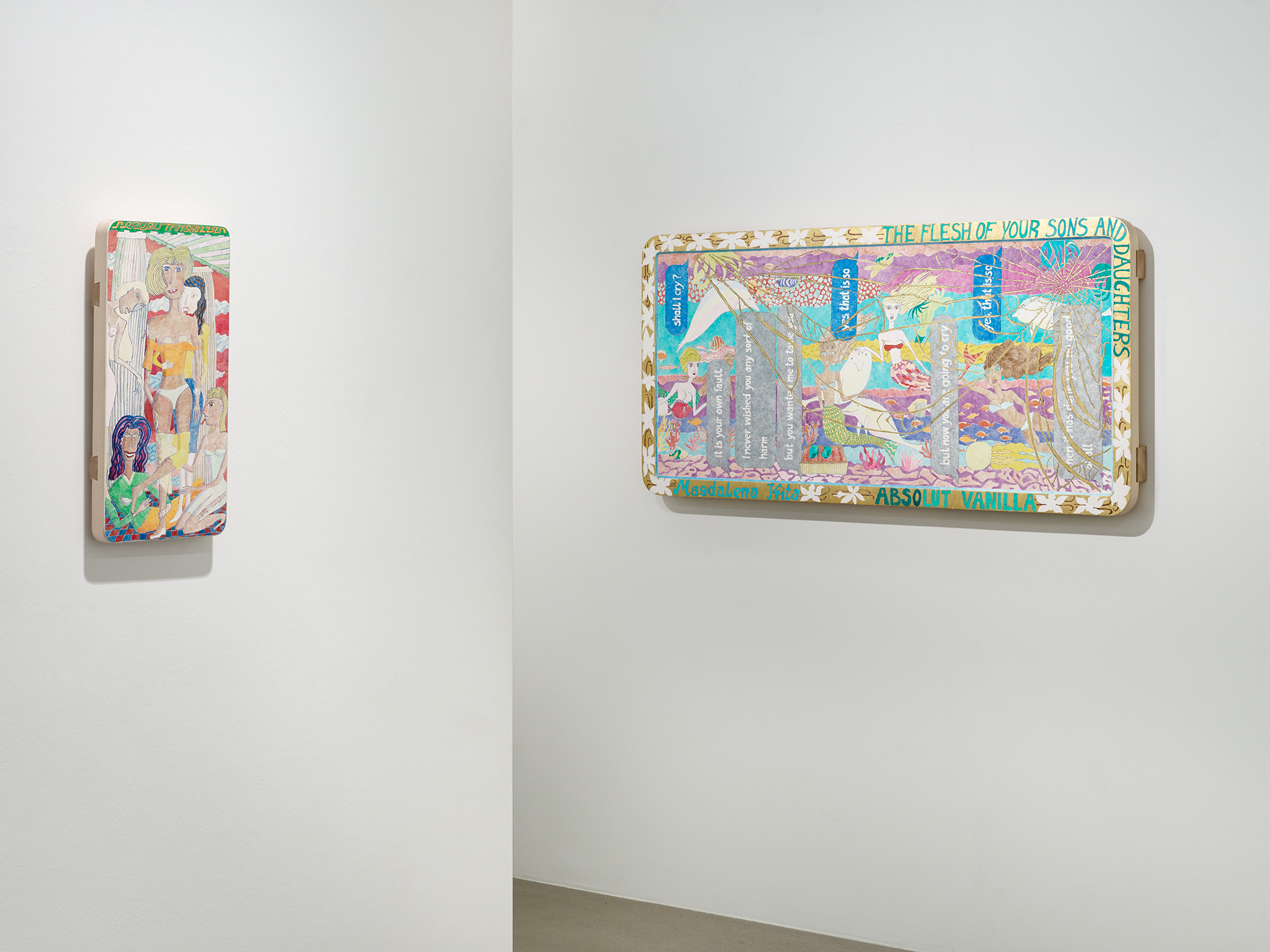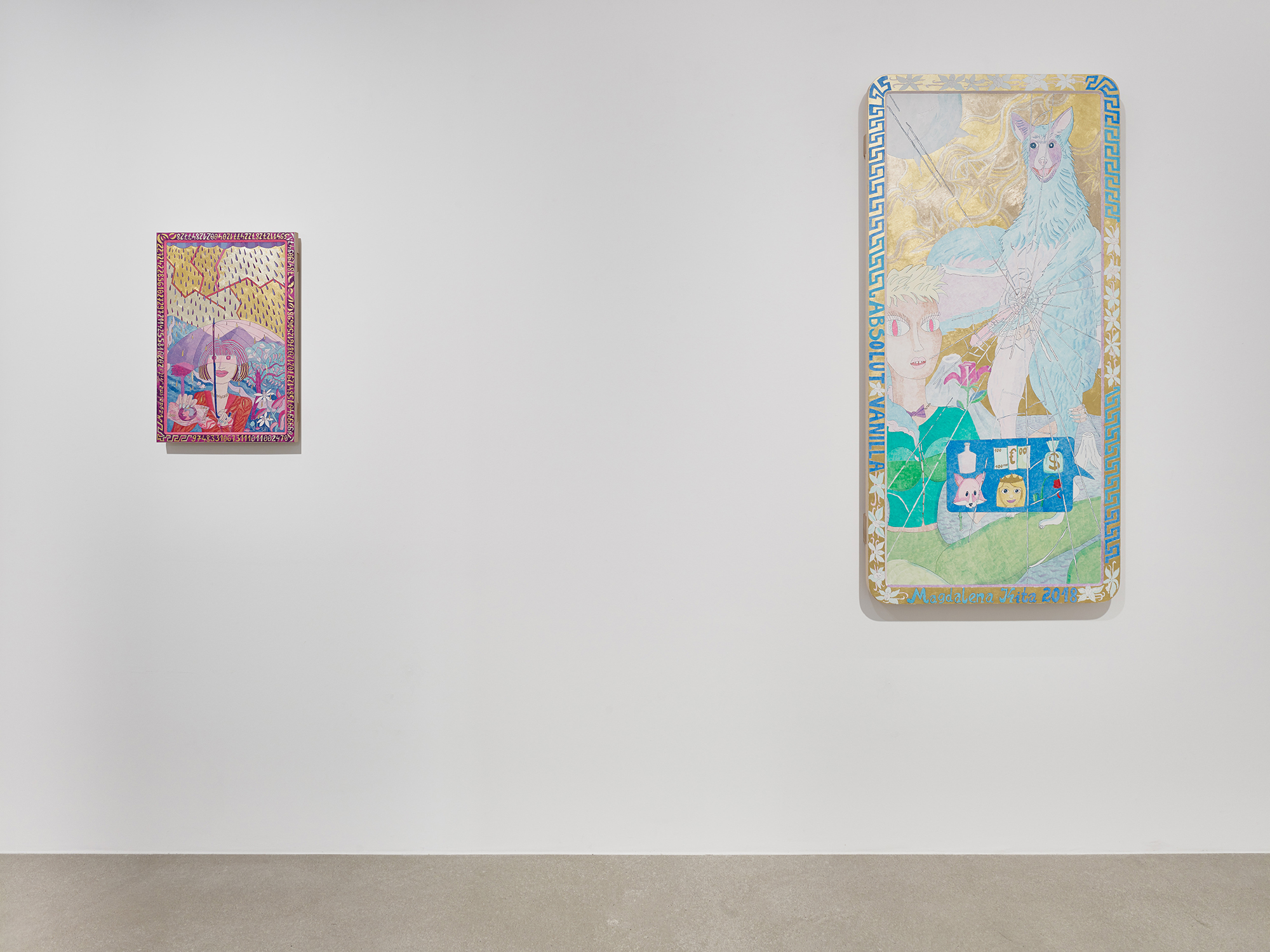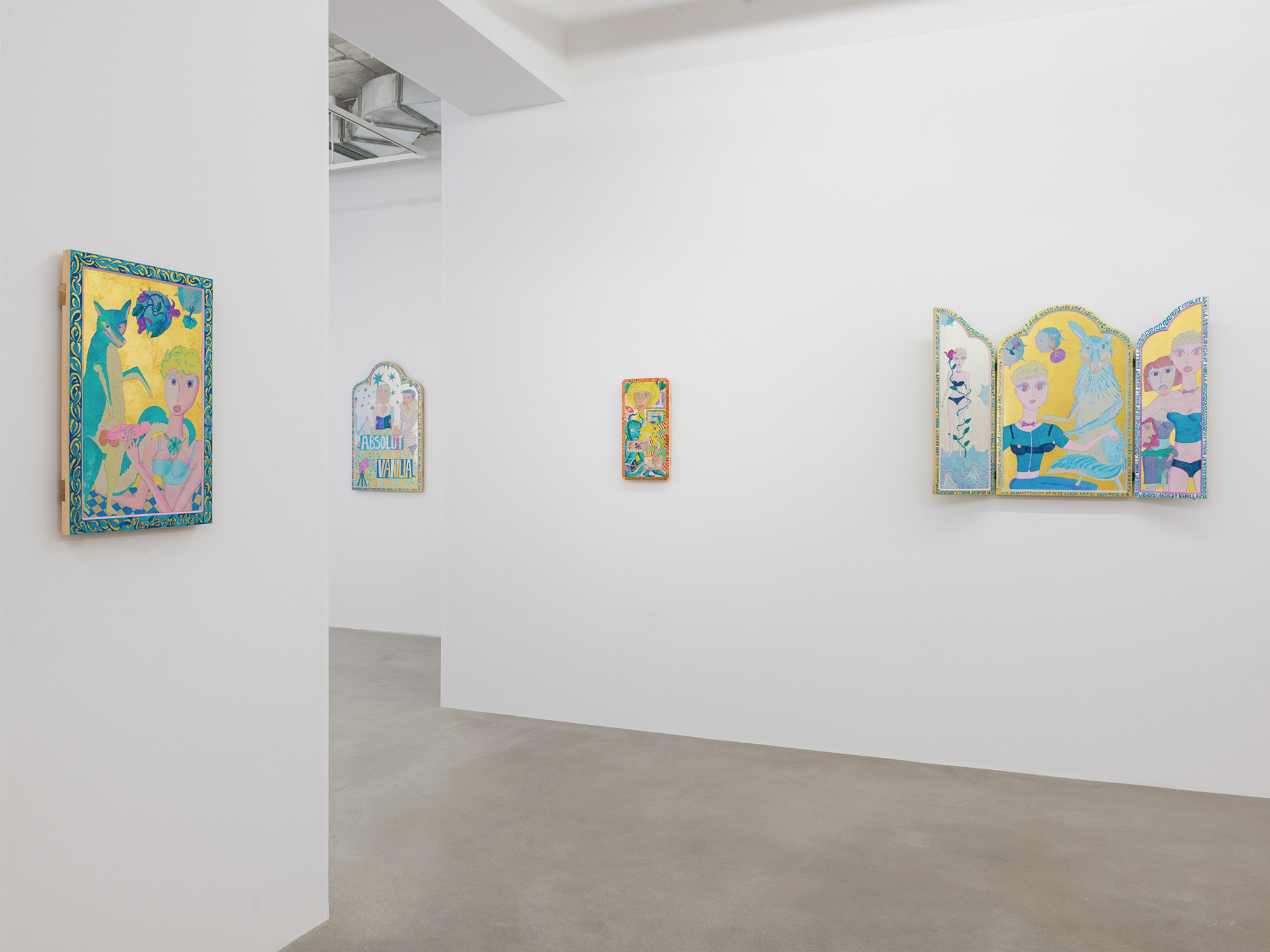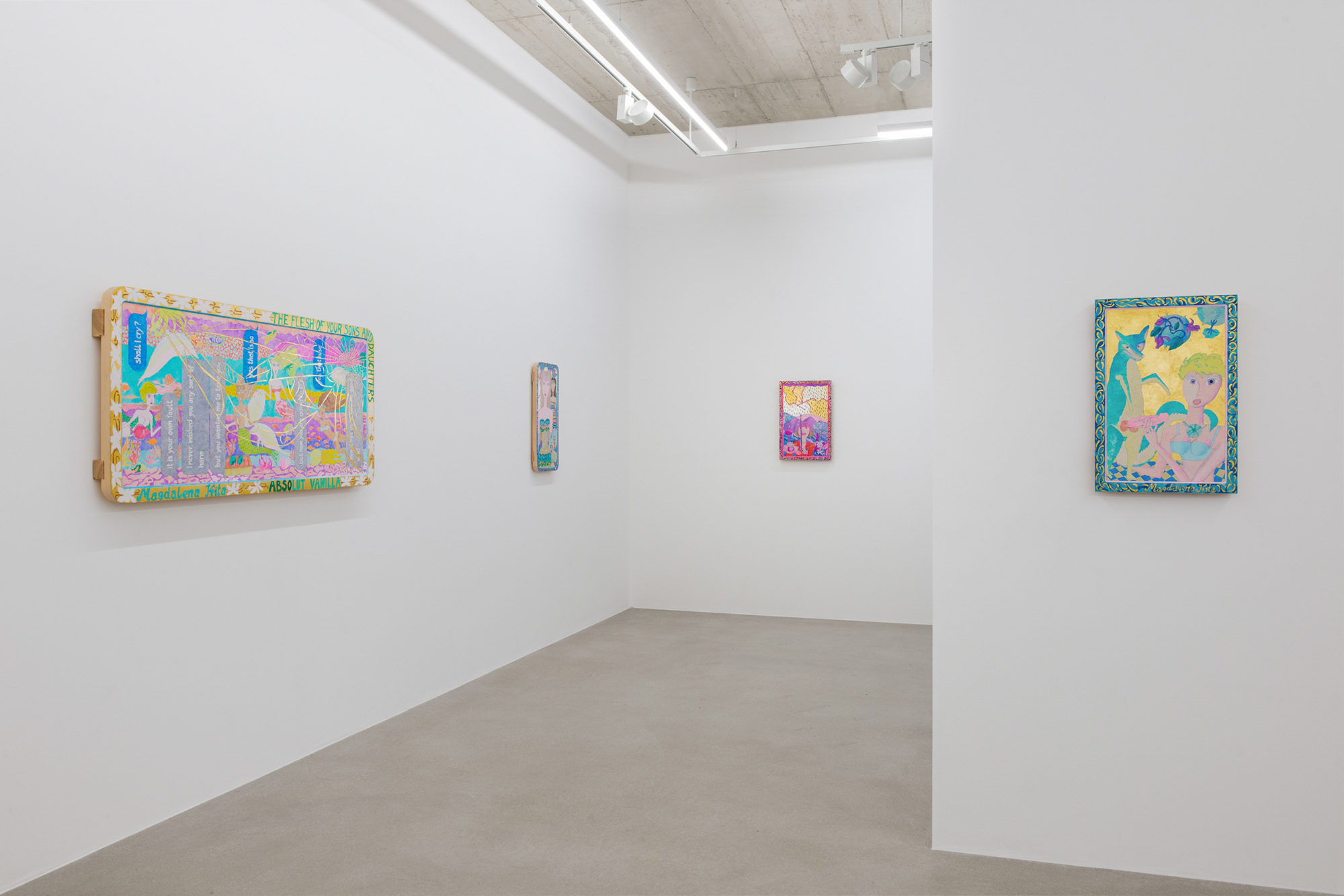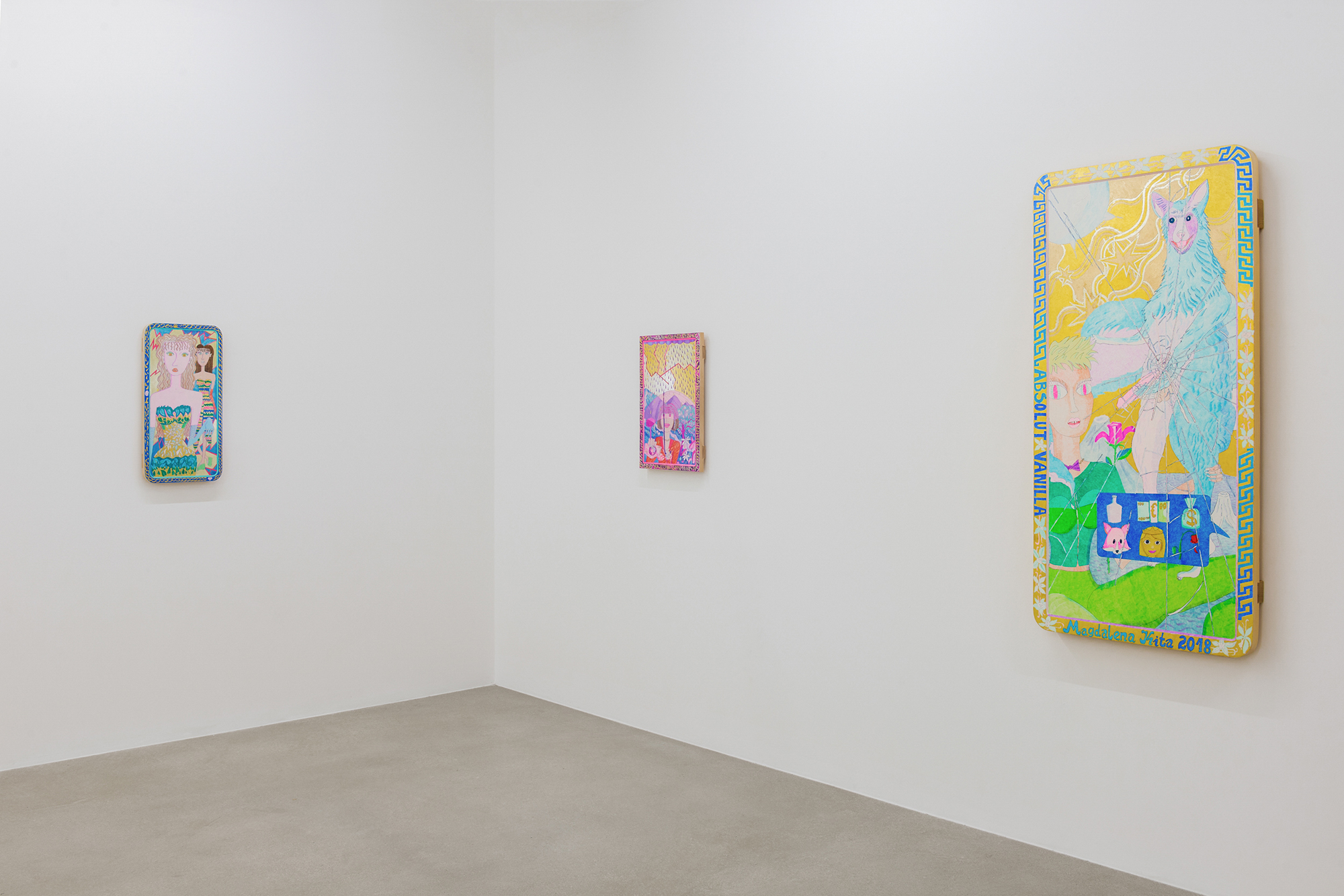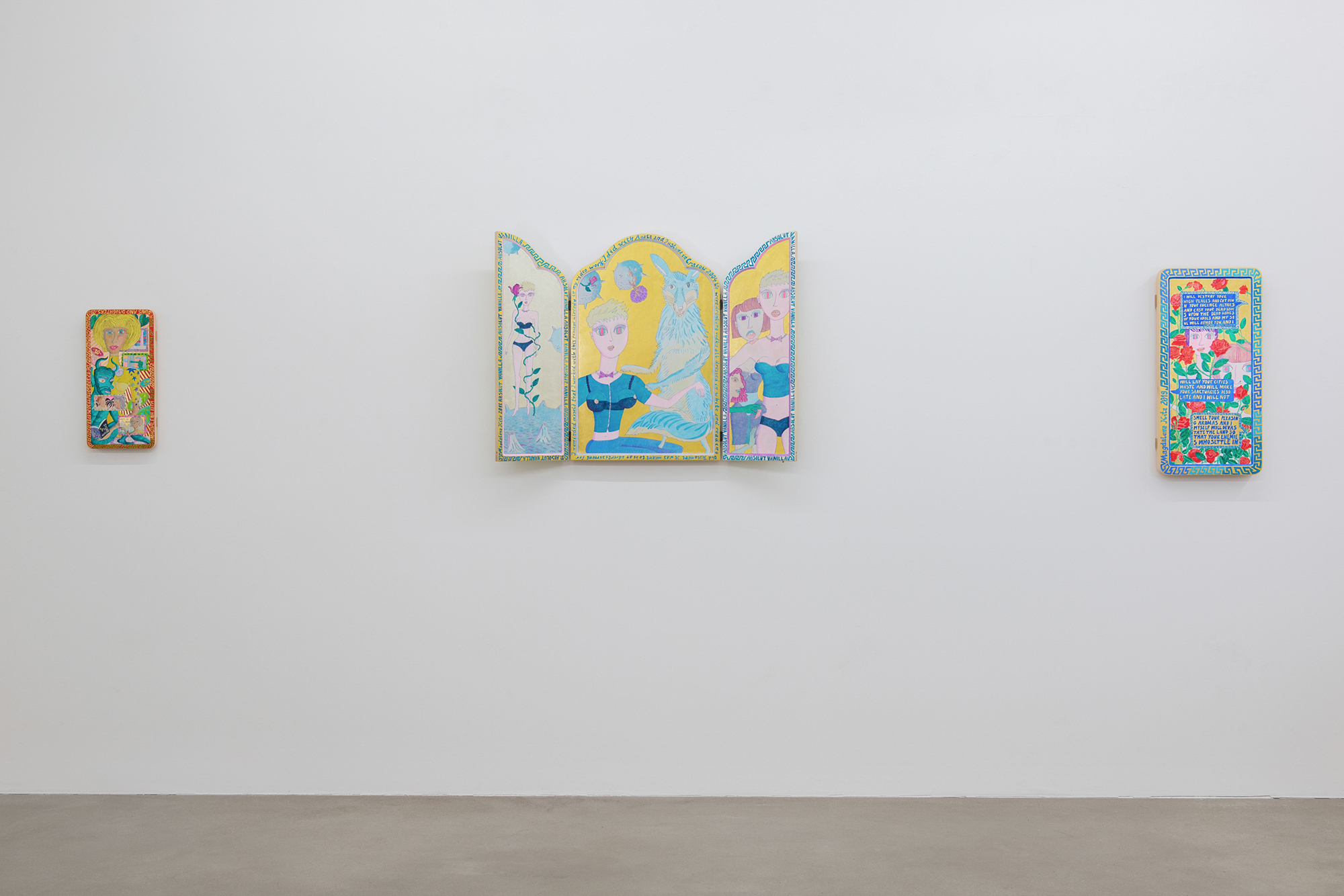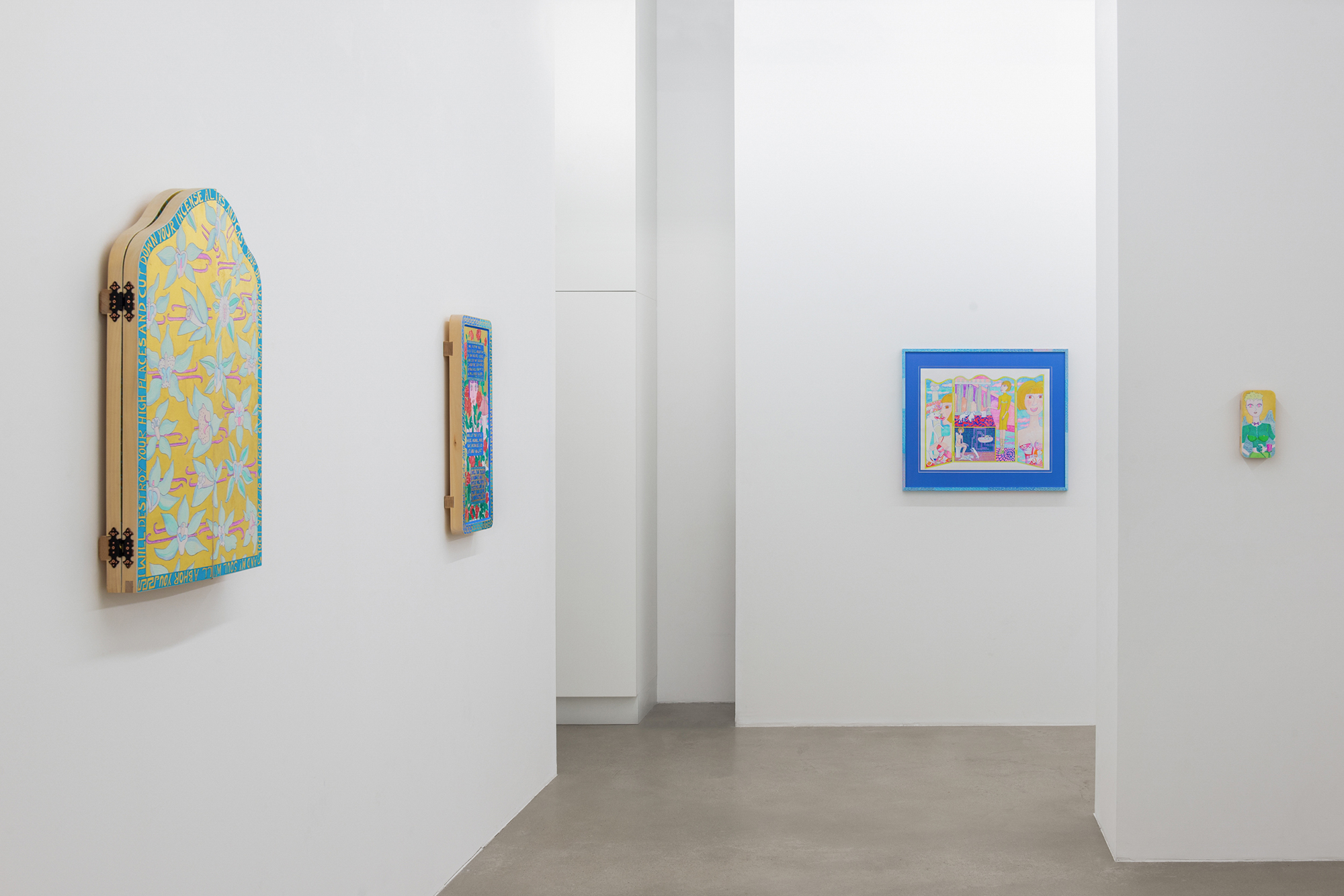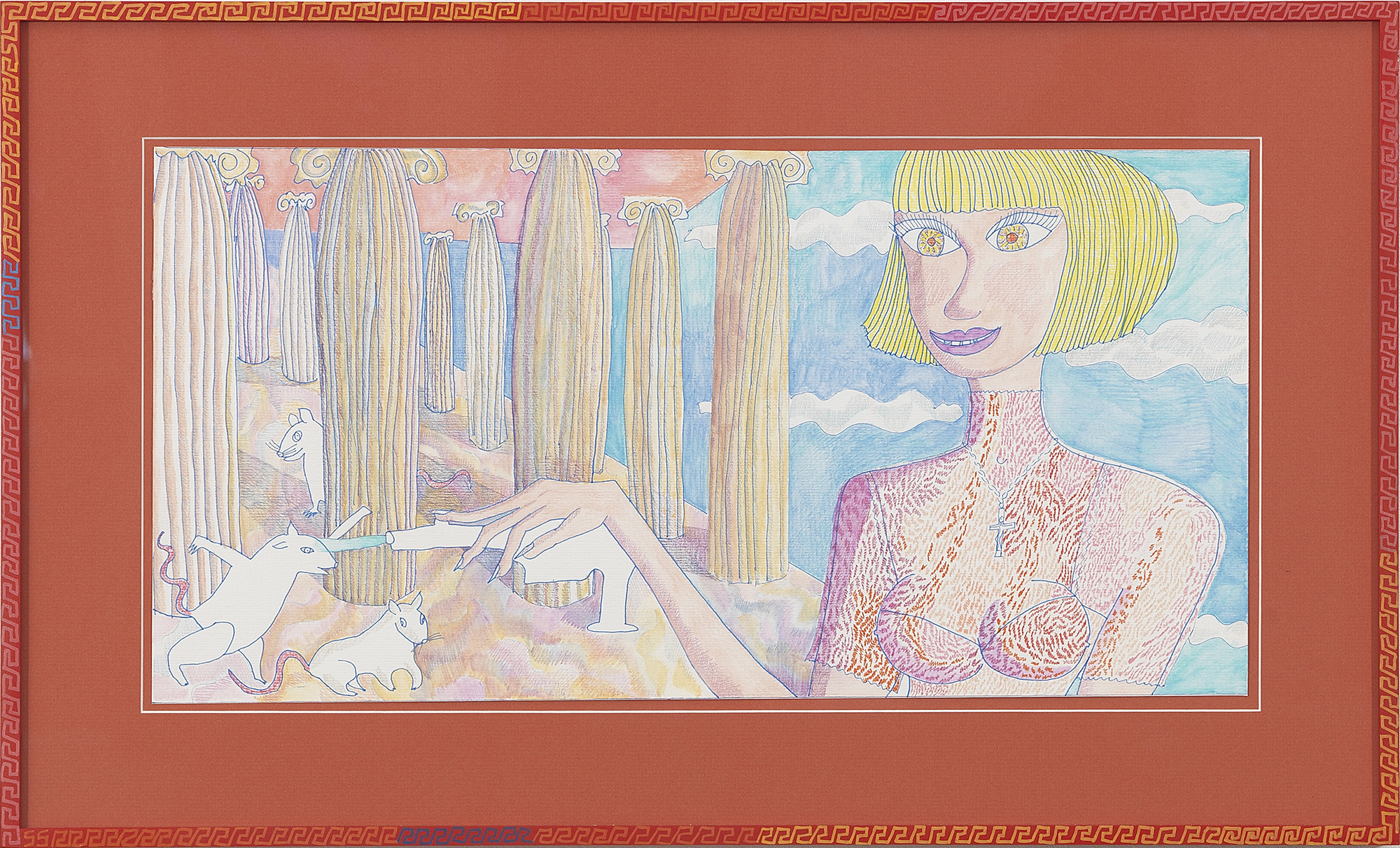ABSOLUT VANILLA
Magdalena Kita
October 26 - December 8, 2018
@
Setareh Gallery
Hohe Strasse 53
40213 Düsseldorf
Germany
Magdalena Kita’s paintings are charged with grotesques and explicitly erotic representations and make multiple references – to children’s book illustrations, Art Brut, comic and trash culture, and Christian icons of saints – that link to various cultural narratives. The exhibition ABSOLUT VANILLA at SETAREH GALLERY, whose title refers to a performance in 2004 with the liquor of the same name, presents new works by the Polish artist (b. 1983 in Debica, PL, lives in Cologne). “Vanilla” is also a term from the BDSM scene for “normal” sexual practices. In her very direct depictions, Kita counter- acts stereotypical gender roles and societal power structures with a thoroughly feminist perspective.
The motifs, emblazoned on wooden panels, shine in pop colours on golden backgrounds. The raw forms of these panels were made in Poland and subsequently engraved and painted with egg tempera and gold leaf. Kita formally takes up the worship and production of icons that is still active today in her arch-Catholic home country. In this way, the aura and therefore the virtue of the image in the adoration of the holy icons, such as the ‘Black Madonna of Częstochowa’, is brought to representation through its materiality.
Moments between worship and seduction, as they occur in icon worship (gold), interest Kita on various levels: in “ faith”, for example of the Scientology sect (usage of the specific blue tone), in fairy tales, in commercials, in online dating, in capitalism (money), etc. The depictions, which often deal with moral aspects, while sometimes showing something immoral, reflect our consumer society, which is shaped by cyber realities and, according to Kita, in need of new icons.
Several of the panel paintings are an homage to the children’s book ‘Le Petit Prince’, beloved by adults, whose motifs she meaningfully modifies in order to fluently transform them into her pictorial language. The little prince is finally able to unfold from his rose and turns into a manga-like cat-eyed princess who, in a disturbing way, commits sodomite acts with the fox. The sexual connotations, which for Kita are already contained in Antoine de Saint-Exupéry’s classic, thus come to a caricaturing as well as exaggerated pictorial awareness.
Many of the works, decorated with golden lettering and meanders, have the form of iPhones, with some of them including speech bubbles, familiar from mobile phone and Internet chats, symbolic for the image and communication carriers omnipresent in our society. The breaks that can be seen in some of the pictures may, alongside iPhone cracks, also be an indication of the icon destruction in the Iconoclasm – especially the iconography of Byzantine icons served Kita as inspiration. The pictorial motifs, created in intuitive eclecticism, appear in connection with its titles and inscriptions: “The flesh of your sons and daughters” (AT, Leviticus 26:99) together with the mix of mythical creatures and scenes of cannibalism, as admonishing and at the same time humorous visions of the socio-critically motivated artist.
Images courtesy of Setareh Gallery, installation photos by Kukas Vogt and Ivo Faber

